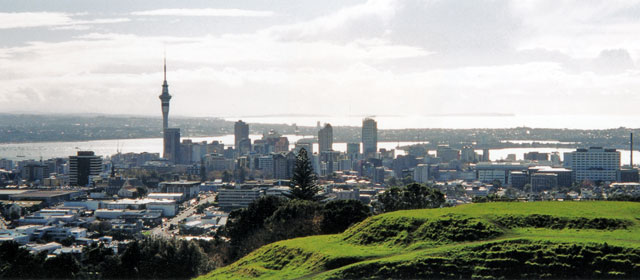Story summary
Tribes and places
Tāmaki (Auckland) has been home to a number of iwi (tribes), and today there are six in the region – Ngāti Pāoa, Ngāi Tai, Te Wai-o-Hua (who originate from Ngā Oho), Ngāti Whātua-o-Ōrākei, Ngāti Te Ata and Te Kawerau-a-Maki.
Volcanic cones and two harbours, Waitematā and Manukau, dominate the Tāmaki landscape. There are several versions of how Tāmaki got its name. Some believe that the name comes from the ancestor Maki or from one of his daughters, while in another tradition it comes from the 18th-century Te Wai-o-Hua chief Kiwi Tāmaki.
The canoes of Tāmaki
In early times, canoes were dragged over Te Tō Waka, the narrow stretch of land between the Tāmaki River and Manukau Harbour. From the harbour they went inland along the Waikato River, or they sailed south to Taranaki, or north to Northland. From Waitematā Harbour they travelled east to the Coromandel. With so many interconnecting routes, Tāmaki is associated with many of the canoes that came during the early migrations from Polynesia.
European contact
After Europeans arrived in New Zealand, some tribes acquired guns. During intertribal wars between 1815 and 1840 many Tāmaki tribes suffered heavy losses.
A number of Tāmaki chiefs signed the Treaty of Waitangi in 1840, but this did not ensure that their land was protected. Early European settlement and the relocation of the capital from Russell to Auckland at this time meant land was in demand. By 1850 most of the usable land in Auckland had been bought by Europeans. Some Māori were driven from their land. Later, land was used for public works such as a sewage plant and Auckland airport.
Tāmaki tribes today
In the mid-1980s the Waitangi Tribunal found that some Tāmaki tribes had lost land unfairly. Today, having received compensation for losses, the tribes are considered an important part of the future of the Auckland region. In 2013, more than 18,500 people said they were affiliated to the Tāmaki tribes.





